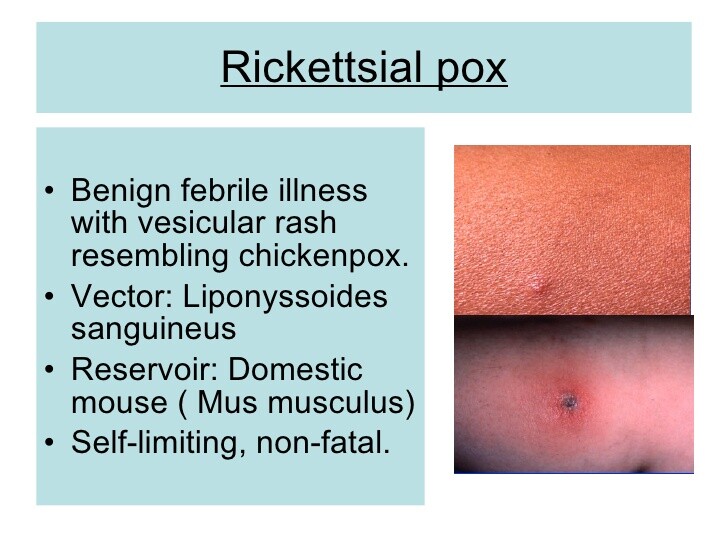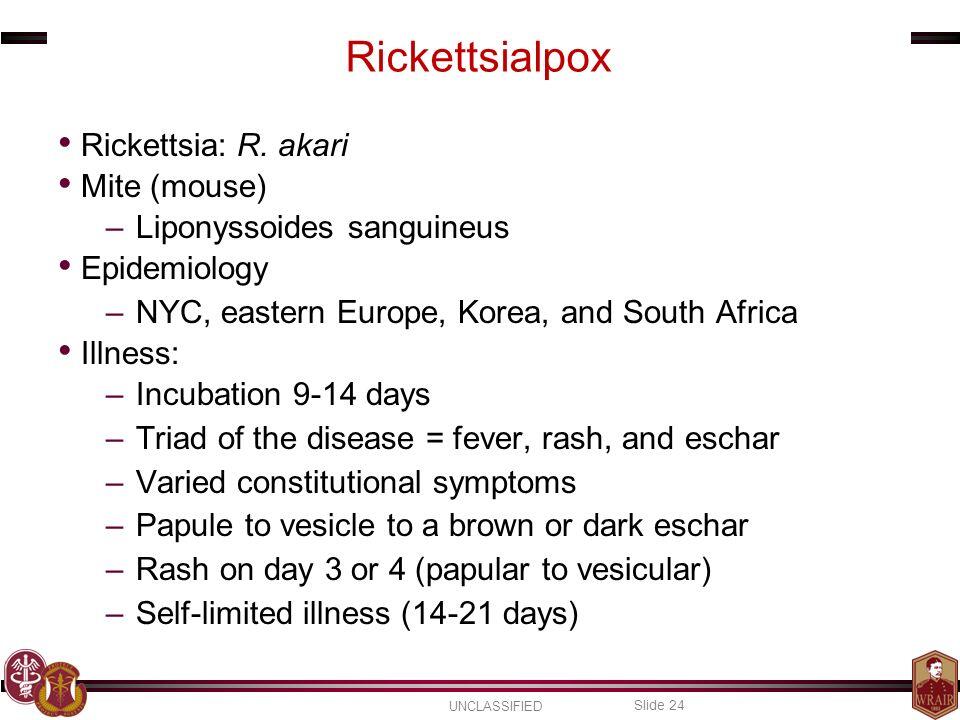Essentials of Diagnosis
- Eschar at site of mite bite.
- Regional lymphadenopathy.
- Generalized erythematous papulovesicular eruption on the trunk, extremities, and mucous membranes 9-14 days after exposure.
- Systemic symptoms including chills, fever, myalgias, anorexia, and photophobia.
- Prediposing factors include urban dwelling in close proximity to house mice.
- Serology for R rickettsii will cross-react with antibodies to Rickettsia akari.
General Considerations
Rickettsialpox has been reported infrequently in the United States. This disease is a mild, self-limited illness caused by R akari and is transmitted to humans by a house mite. Both the house mouse and house mite are reservoirs for the organism.
Clinical Findings
A painless papule develops 7-14 days after the mite bite. The papule then becomes vesicular, dries, crusts over, and evolves into a black eschar. The onset of clinical illness, characterized by abrupt onset of high fever, sweats, headache, myalgias, and malaise, occurs 4-7 days after the appearance of the initial papule. The systemic symptoms are usually mild, but, if untreated, the patient will have daily temperature elevations up to 39-39.5°C for 7-10 days.
A maculopapular rash appears at the onset of fever and quickly becomes vesicular. The vesicles are small and nonpruritic, and they may be numerous or few. Within a week, the vesicles crust over and disappear with no sequelae. The diagnosis is best established by the epidemiologic history, the presence of a primary eschar, and a serum IFA test. Therapy with doxycycline or chloramphenicol is effective (see Treatment section for Rocky Mountain spotted fever). Preventive steps involve eliminating house mice and their mites.
Read more
https://en.wikipedia.org/wiki/Rickettsialpox







